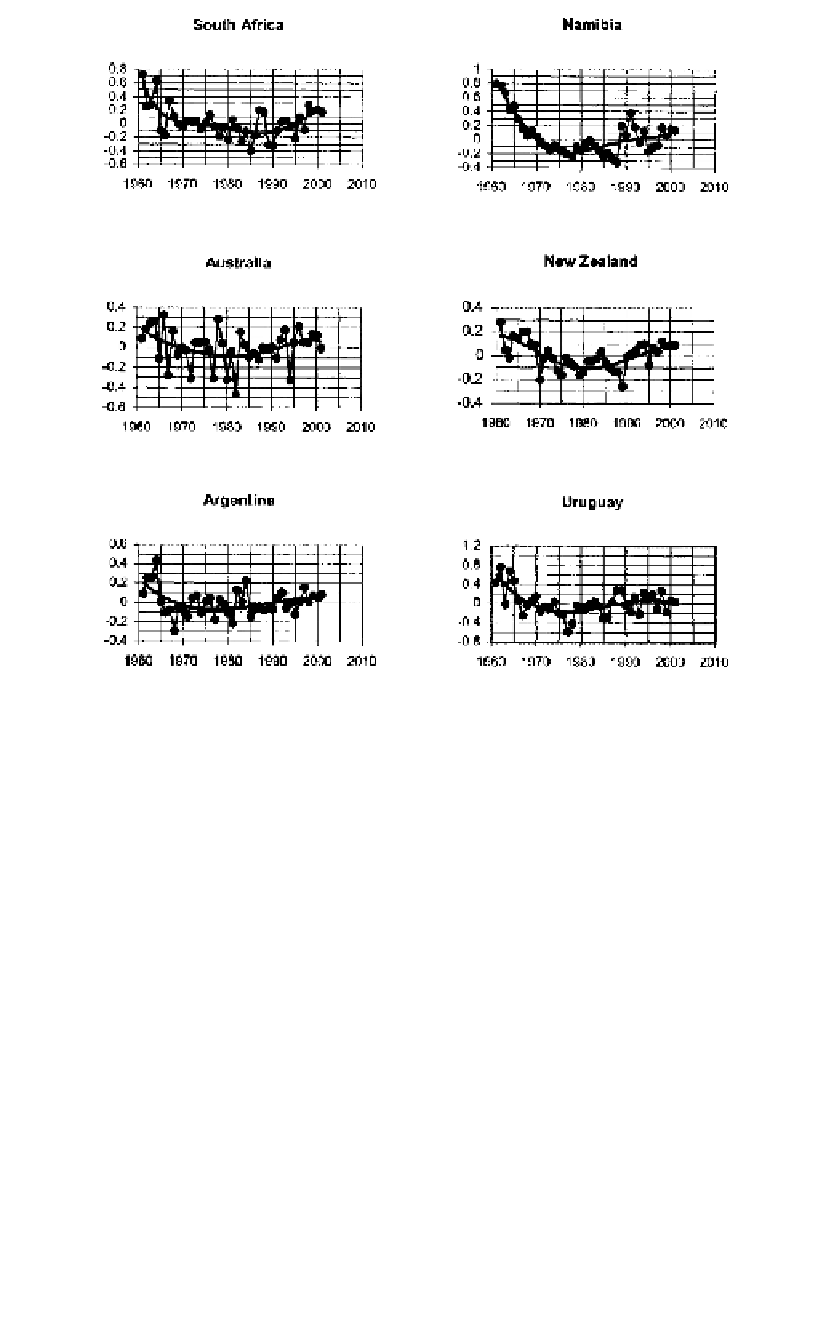Agriculture Reference
In-Depth Information
1
2
3
4
5
6
7
8
9
10
11
12
13
14
15
16
17
18
19
20
21
22
23
24
25
26
27
28
29
30
31
32
33
34
35
36
37
38
39
40
41
42
43
44
45
46
[441
Line
——
-0.0
——
Norm
PgEn
[441
Figure 34.5
Annual variability in wheat yields in some countries of Southern Hemisphere;
bold solid lines are the trends.
and the actual data, but when it comes to atmospheric precipitation the
agreement is much less satisfactory. This limits the development of com-
plete techniques for analyzing the agricultural consequences of expected
climate changes in the manner we have just described. Therefore, any es-
timates of crop productivity changes that are carried out with the use of
different model scenarios will have a rather low accuracy because of the
limited reliability of the forecast used.
Tr
end Analysis
Instead of using climate model predictions, another method of climate
change prediction is the empirical extrapolation of trends in modern cli-
matic parameters to the forthcoming decade. In comparison with the meth-
ods based on climate models, there is no reliable physical basis for such
forecasts. In this case one is assuming that the current global warming
masks any natural climatic variability and thus completely controls the












































Search WWH ::

Custom Search